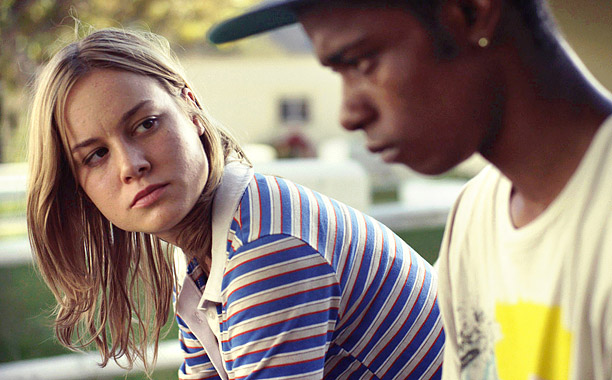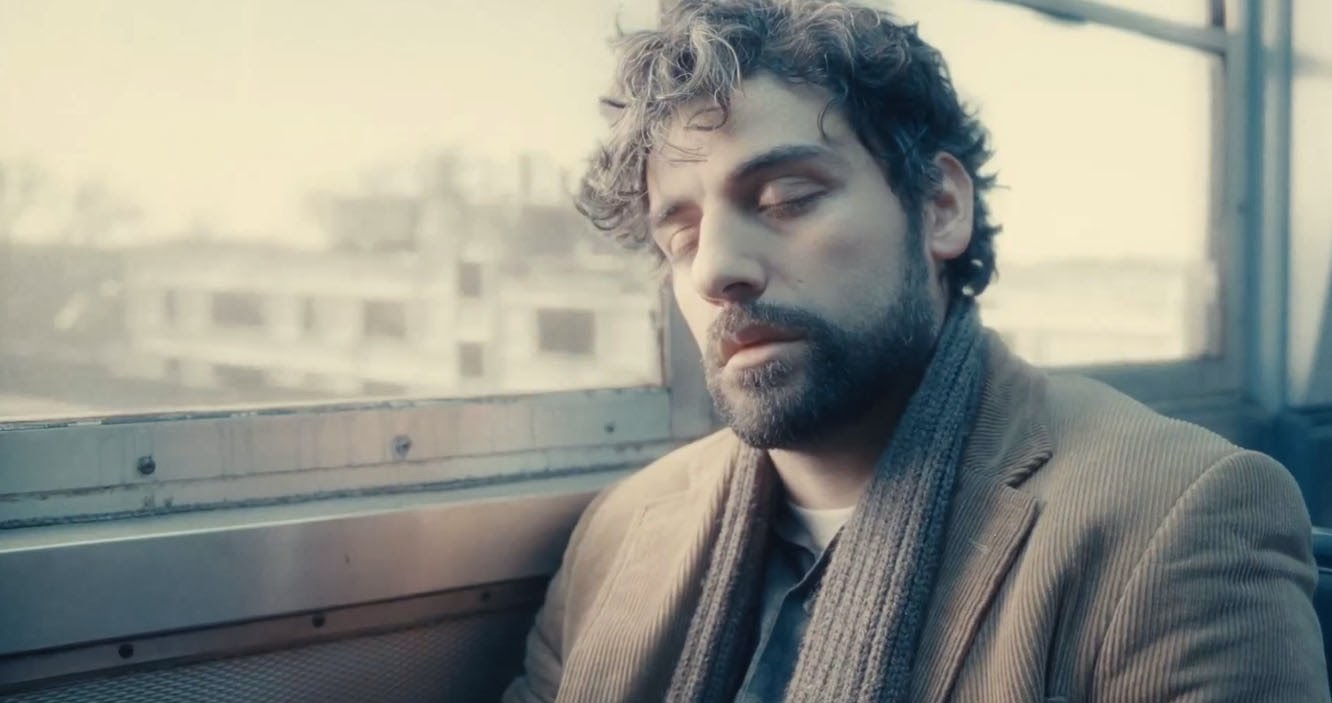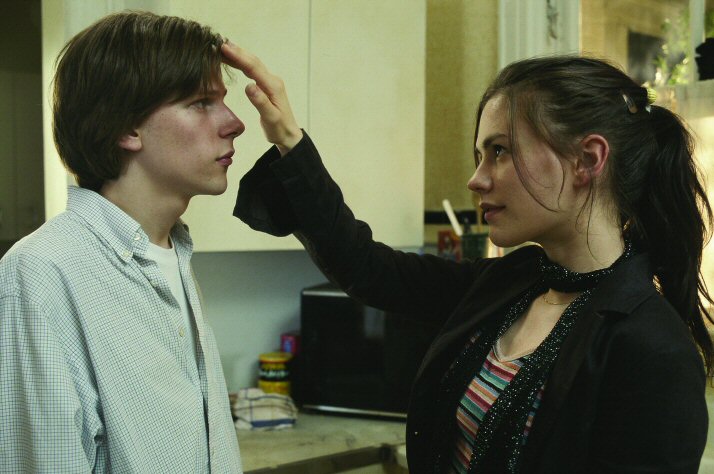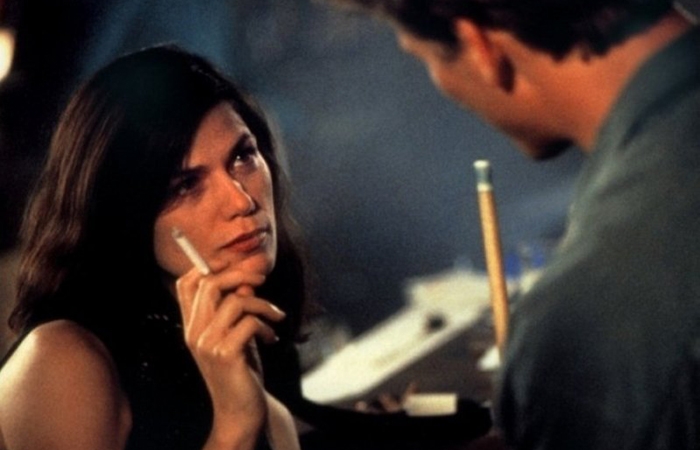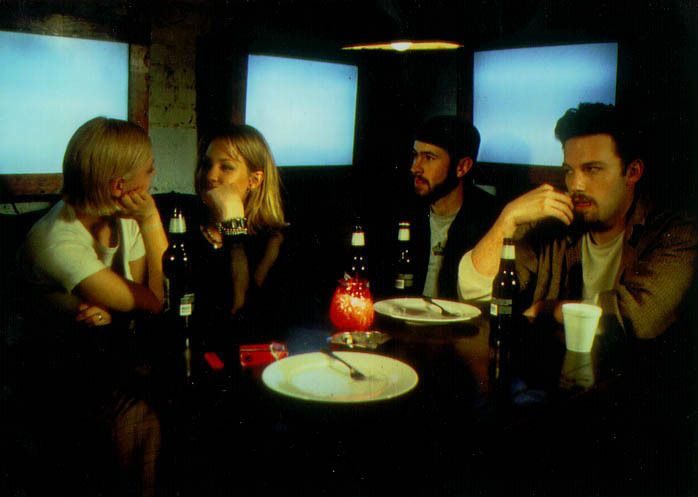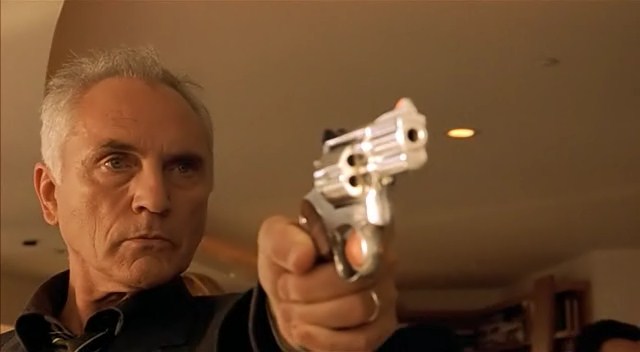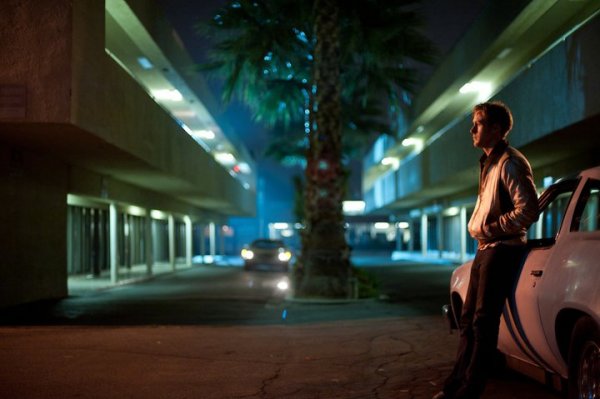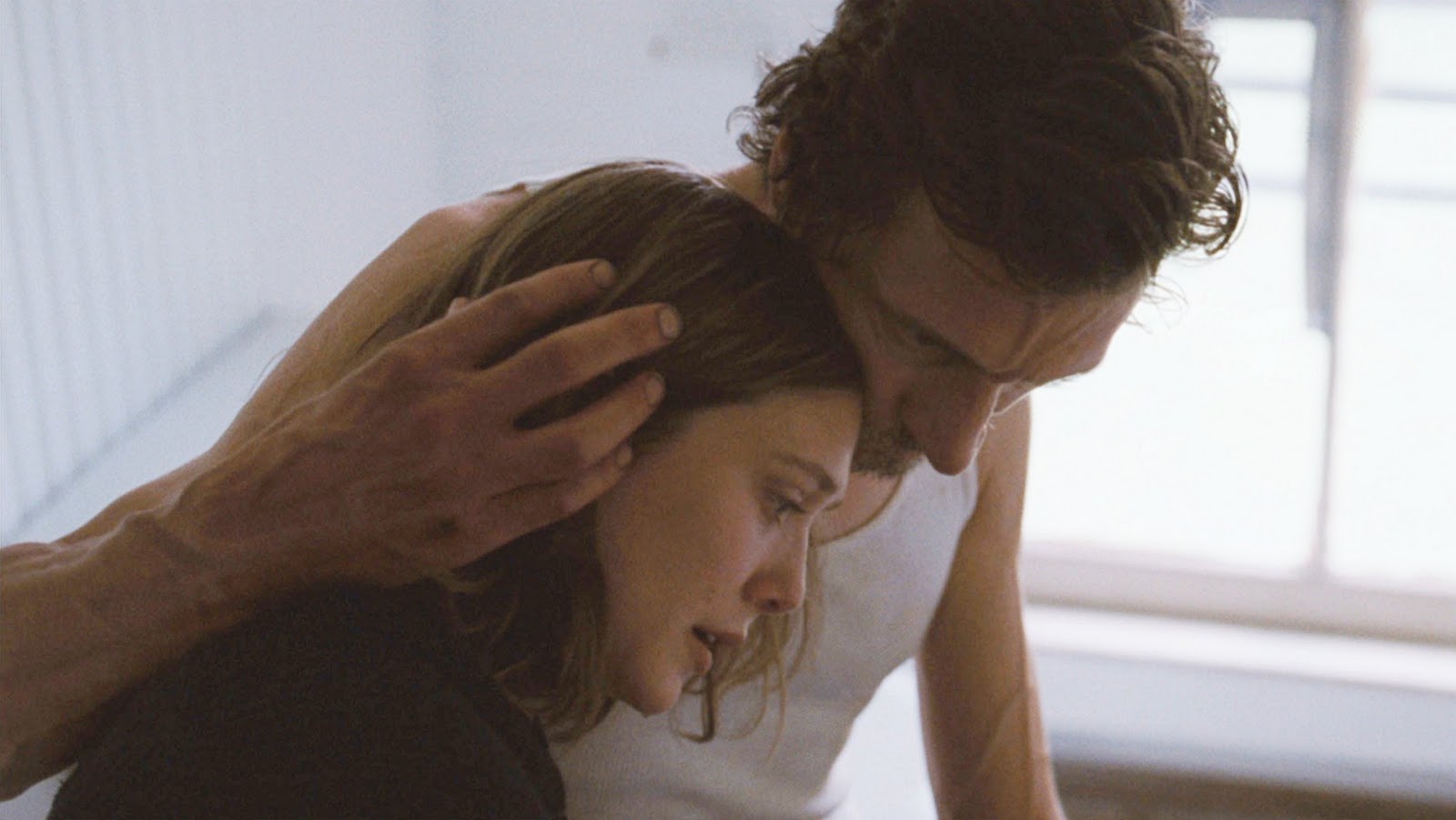23. Short Term 12 (2013)
To be unassuming is not always a bad thing cinematically. A film with a natural aesthetic needs to rely on its actors and scenarios to anchor it, tighten it, draw you into its world and fell for that world’s inhabitants. Short Term 12 has a typically underwhelming opening, but one perhaps rife for larger metaphor.
As a bunch of camp workers stand around sharing a rather crude story, we get a sense of a very relaxed, mumblecore tone being established. They are a bunch of late twentysomethings, directionless, moping about and telling stories. It is the kind of indie film pastiche seen many time. Yet suddenly, a disturbed child rushes from an adjacent door and hurtles towards an exit. Suddenly, there is panic and shouting, the mood becomes tense. This is the essence of Short Term 12 . From the relaxed tone of mumblecore comes real shock and, occasionally, real darkness.
Yes, the camp is a camp for troubled youths. Where escape attempts are but minor worries when put in context of suicide attempts. Indeed, any plot arch that attempts to reach outside the realm of the camp almost seems futile. For instance, viewers may struggle to even remember the presence of a romance between Grace (Brie Larsen) and Mason (John Gallagher Jr) after the fact, as the discussion will no doubt center so strongly on the scene involving the teens. Petty squabbles become major threats, and any attempt to get to close to troubled youths may be dangerous.
The film’s universe carries the sort of consequences inherent to a war film. A rap performance in particular may leave you breathless; a scene in which the teens decorate a fellow housemates walls carries devastating weight. Yet, the film has an optimistic undercurrent, one that manifests in the viewer a possible fulfillment amidst emotional exhaustion.
22. Inside Llewyn Davis (2013)
As bittersweet as a great folk song, and set to provoke as much thought in its conclusion, the Coen Brothers certainly pitched their 16th film rather high. It is rather remarkable then that despite being set in the year 1961, the film sees the Coens looking as in touch and youthful as they have in some time. It could be said that this film sees the return of the “hip” Coens, the “happening” Coens. Llewyn Davis is a character that might well haunt any given twentysomething.
Young, directionless, and disenfranchised, aspiring folksinger Llewyn makes the same mistakes over and over; with his guitar in tow to chronicle his vagabond existence in music. His label boss is a decrepit old man, his former band mate is nowhere to be found, he lives on couches, and he can never keep a hold of his cat, things truly do not look good for Llewyn Davis.
Between references to cats scrotums and Private Elvis Presley, not to mention a hysterical musical cameo from Adam Driver, the film does manage to establish its themes. The film is best summarised by a striking road trip sequence in the company of a drug addicted John Goodman, this film is a one way trip to nowhere.
Why watch it? Because, like the music of the 60s, in oozes charisma and humanity. Like the songs Llewyn sings, his own sadness has a wisdom to it. His interactions with his “love interest” Jean should stand as testament to this, he truly weathers a storm of vitriol. The photography is bleak but stunning, typical of New York in Winter. The period recreation, too, is sublime. Still struggling after the meaning to the ending? Remember, the cat’s name is Ulysses.
21. The Squid and the Whale (2005)
One of the frankest, and most comprehensively characterized films ever made about the disintegration of a family, The Squid and the Whale may still be Noah Baumbach’s masterpiece. Loosely centering on Jesse Eisenberg’s Walt Berkman, this tale of a marital breakup in 1980’s New York is both cinematic and frighteningly real.
The tale touches on subjects as diverse as tennis, erotic prose, Lou Reed, Kafka, and juvenile alcoholism, all with a sense of human understanding that gives the viewer a genuine feel of realism. We see through the facade of some characters, we identify with others, but either way we leave having been gifted a true slice of life.
The film is semi-autobiographical for Noah Baumbach, and as a writer he draws his characters with surgical precision. Jeff Daniels’ Bernard is a frightfully pompous patriarchal figure, Laura Linney’s Joan is a likable but subdued matriarch with hidden abilities, Owen Kline is magnificent as the juvenile Frank up acting out tragically in the wake of family dysfunction.
We also meet the provocative writing student, the tennis coach lover, the earnest girlfriend, and a host of other characters on our journey. It is difficult to avoid seeing your own life reflected painfully in this film.
20. The Last Seduction (1994)
The old adage goes that women are either virgins or whores on screen. But, what about a film in which a woman shamelessly plays both, and with considerable aplomb? This film presents Linda Fiorentino as Bridget, the most vivacious, man-eater one could ever expect to see onscreen.
To watch her in the midst of a passionate encounter with Peter Berg’s Mike in an alley is to realise that, by 1994, there were few limitations left to be imposed on the femme fatale figure made into such iconic pulp in the film noir heyday. In fact, this film is itself seen as one of the most effective of the “neo-noir” callbacks to have been made in the roaring 90s.
Like most femme fatales, Bridget has numerous male victims. Her doctor husband Clay, a lovable schlub played by Bill Pullman, can do little to tame her. He is soon blackmailed into pulling off a drug deal, only to have Bridget make off with the cash and find herself in the arms of Mike.
Naturally, Mike is being used too, as a mere pawn to help keep Bridget out of trouble. The attempt to make Bridget more tragic towards the end may be seen by some as a slight misstep, but this mordant noir has acidic wit that leaves an impression on the viewer that is not easily shaken afterwards.
19. Chasing Amy (1997)
Kevin Smith’s breezy, postmodern style has been well-established by 1997, as had his passion for juvenile subject matter. This, however, only served to make Chasing Amy all the more of a revelation. Simply put, Chasing Amy is a dark film. That said, its beginnings is most definitely in line with the Kevin Smith canon.
A comic book artist from New York meets the girl of his dreams at a comic convention, she a fellow comic artist. There is only one problem, she is a lesbian. Still, he aims to convert her sure enough. Cue the mandatory pop culture banter at a trendy rock gig, and a now infamous Jaws homage in which our protagonists compare scars they have received performing oral sex, and it appears that we are very much in for standard Kevin Smith fare.
Yet, the confusion, sexual insecurities, and screaming commences. Ben Affleck and Joey Lauren Adams play their characters with utter pathos. A scene in a parking lot becomes as tense as anything one could possibly imagine in a Kevin Smith caper. In the end, doomed romance is on the menu at large.
Particular commendation, however, came for Jason Lee as Banky. While Holden and Alyssa are the bedrock of the film, it is Banky’s repressed sexual urges that come as perhaps the most startling, given the roguish best friend archetype that exists in most romantic films. With drama like this, the Jay and Silent Bob cameo actually comes as tonally jarring.
18. The Limey (1999)
As cinematically exuberant a vigilante thrill ride as one will ever find on screen, this was Steven Soderberg’s last authentically indie film before breaking the big time with Traffic the following year.
Like all good cult films, a band of passionate devotees have very much kept this sleeper classic’s legacy alive. Its not hard to see why in terms of the film’s tone, from the opening sequence, set to The Who’s The Seeker, this is a riotous opera of rock and roll classics, ageing cult actors (Peter Fonda and Terrence Stamp), quotable dialogue, and black humour attributed to murderous vigilante violence. It is as though Soderberg was consciously bidding farewell to his indie persona, and perhaps he was.
There are potentially divisive elements at play, such as Wilson’s fondness for Cockney rhyme in expressing himself and Peter Fonda’s Valentine and his occasional cartoonish mannerisms. However, there is a clear beating heart at the center of the narrative, concerning the alienation of a family and the death of a daughter.
It is, at under 90 minutes of runtime, a potent shot in the arm of a film. Those accustomed to the vigilante genre should find novel tones and revisions to interest them. In the end, you may find the line ‘tell him I’m coming!” echoing in your mind for days afterwards.
17. Drive (2011)
A style odyssey, bold in its silence. This film was crafted to be a cult classic and largely found its mark amongst the film public. Directed by the often divisive Nicolas Winding Refn, the film is like a Brothers Grimm fable set in the heart of modern Los Angeles. Gosling’s Driver is the handsome prince, flawed but willing to do anything to defend what he holds dear.
Irene (Carey Mulligan) is the tragic unloved Princess who enraptures the prince. Shannon (Bryan Cranston) takes the role of faster father to the orphaned prince. Standard (Oscaar Isaac) is the fool, the meddlesome village idiot that causes the great tragedy. Then, there is the revelatory Albert Brooks as Bernie, the black hearted villain. The characters are set nicely and the pieces are methodically aligned for an LA fairy tale. Then, comes the outfits, the music, and the bloodshed.
It is apt that Gosling’s protagonist goes unnamed. He is an LA subject. He is the glamour, corruption, silence, and redemption of the Tinseltown all wrapped up into one. The tooth pick, the driving gloves, the jacket, the vacant faces in the changing room of a strip club, these are all just like scenes in the movies that the Driver makes a living driving in by day. The violence, too, is pure Hollywood.This renders the ending subject of debate. Is the Driver simply a hopeless product of his environment? Or, has this prince become, as the song melodically suggests, a real human being?
16. Martha Marcy May Marlene (2011)
A young woman escapes a Manson Family-esque compound after two years. She calls her estranged sister from a payphone, only to be taken in by her sister and her well to do husband in their holiday beach house. While there, the girl stands to break up a healthy marriage and turn lives upside down as she battles her demons and the threat of her cultist associates catching up with her.
Some stories sound so good that you may think that they write themselves, which makes it all the more impressive that first time feature filmmaker Sean Durkin has conceived a script that keeps you guessing literally to the very last frame. Is Marcy insane? Is she the product of conditioning? What was real and what wasn’t? Questions abound and only some are given answers. Still, the journey is what matters, the journey is the story.
A star is truly born in Elizabeth Olsen. She plays Marcy with wit and occasional sarcasm, but she never loses the vulnerability that might drive a viewer away. Her occasional exhibitionism in the first half of the film is met with sheer hysteria in the second half. This is so much more than its juicy premise. As Martha’s family wilts under the pressure, we can truly relate. Whether you will be smiling or scratching your head at the final shot is up to you.
